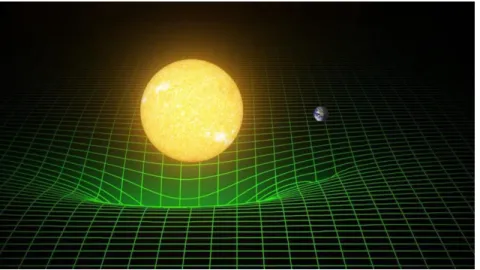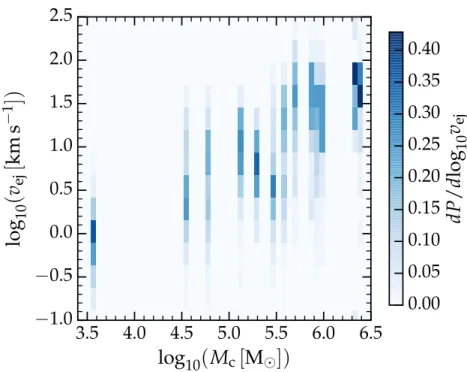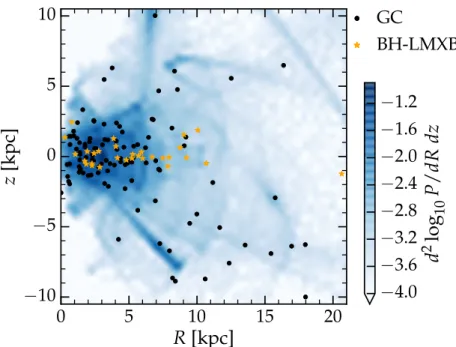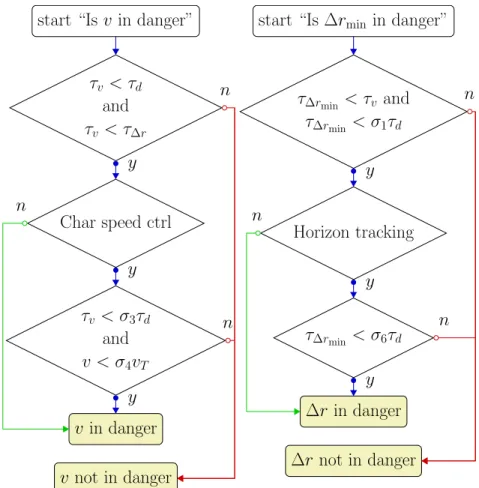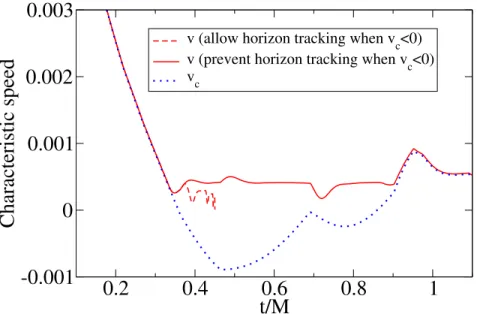Introduction
Our new view of the universe
The extreme gravity of the black holes is evident in the distortion of the background stars, as the path of light from the stars is bent by the black holes before reaching the observer, producing complex geometric features. LIGO has been hailed for giving us a new view of the universe, by allowing us to 'see' merging black holes through the gravitational radiation they emit.

General relativity
The Earth revolves around the sun trying to maintain a 'straight' path, but a straight path in warped spacetime forces the Earth to travel along a more circular trajectory. Likewise, Earth's matter also causes spacetime to bend around it, but to a much lesser extent than the Sun.
Gravitational waves
A powerful laser passes through a beam splitter and sends light through each of the 4 kilometer long arms. This corresponds to a change in the length of the LIGO arms of ∆L ∼5×10−18m, which is about 100 times smaller than the radius of a proton.
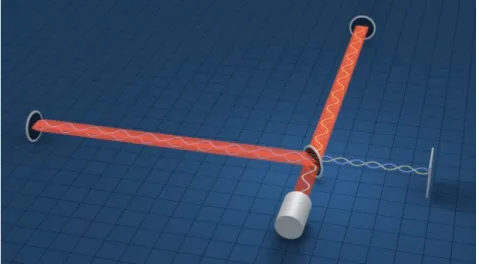
Binary black holes
This final phase of binary life is known as the ringdown, analogous to the way a struck bell sounds. The illustration shows a rough separation of the waveform into the three main areas of binary life: the inspiral, the fusion and the ringdown.
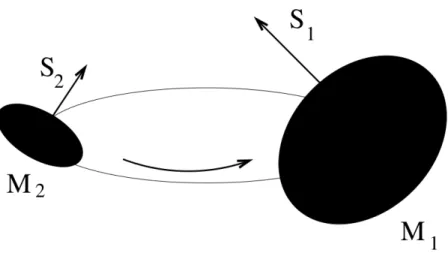
Numerical relativity
In this thesis, all numerical relativity results were produced using the Spectral Einstein Code (SpEC) [13], developed by the Simulating eXtreme Spacetimes collaboration [14]. This means that a comparable change in resolution (ie, the number of grid points in the computational domain) produces much less computational error in spectral versus finite-difference methods.
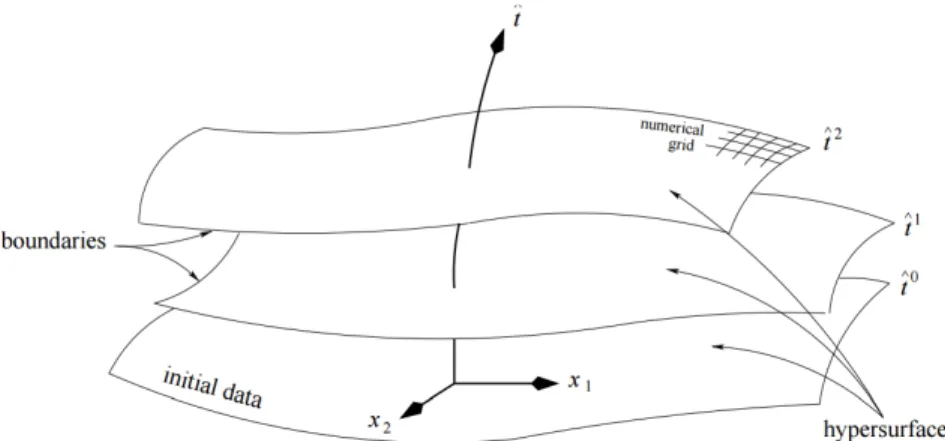
Black holes in globular clusters
Black holes that arise from low-mass stars emit in the X-ray spectrum, giving them the distinct label: low-mass black hole X-ray binaries. Below we discuss these two promising observations that characterize black holes originating in globular clusters.
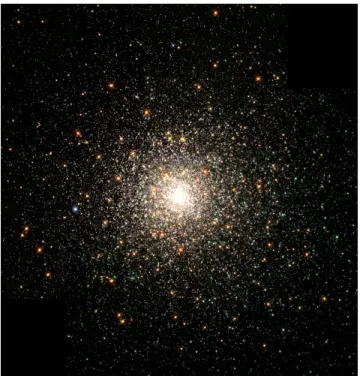
- Binary black holes with nearly extremal spins
- Black hole ringdown
- Testing Einstein’s theory
Of the 125 coreless GCs in the Harris catalog [54, 2010 edition], we can find literature values for the orbital parameters of 106 of these clusters in the catalogs [74] and [75]. In the process of binary increasing its kinetic energy, the binding energy becomes more negative.
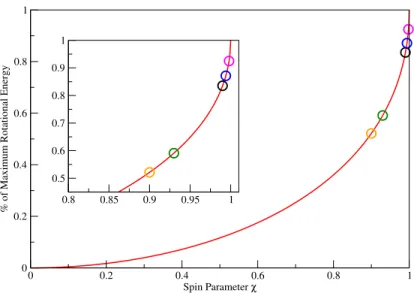
Low-mass X-ray binaries from black-hole retaining globular clusters 23
Introduction
BH-LMXBs originating from BH-retaining GCs could help explain some of the peculiar properties of the observed BH-LMXB population in the Milky Way. We investigate the distribution and properties of the resulting population and its dependence on BH retention in GCs.
Methods
To account for the uncertainty in the size of the binary population in a cluster, we allow a specifiable binary fraction. With the mass of the third body and the relative velocity known, the maximum impact parameter is obtained from the cross section of the impact.
![Figure 2.1: The He core mass (marked by circles) as a function of zero-age main- main-sequence mass from the MESA [52] runs, along with the fit (blue, dashed line) given by Equation 2.14](https://thumb-ap.123doks.com/thumbv2/123dok/10412409.0/59.918.219.702.102.513/figure-marked-circles-function-sequence-mesa-dashed-equation.webp)
Simulations
In this section, we describe Monte Carlo models for the further evolution of ejected binaries seeded with the results of our GC models. Since our dynamical simulations include only a subset of Galactic GCs, we use the results from the 15 GCs simulated in Table 2.2 as proxies for the ejected binary populations produced by the remaining 110 clusters in our Galactic evolution models. The result of our dynamical GC simulations describes the properties of the BH binaries ejected from the GC.
Using these CDFs, we are able to generate sample populations of the BH binaries ejected by the 106 GCs in our galactic evolution simulations.
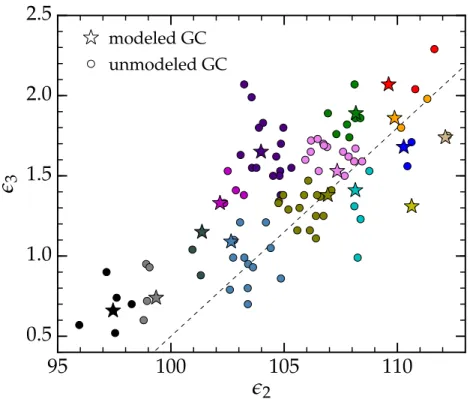
Results
Figure 2.7 displays an increase in the width of the distribution of semi-major axes for larger populations of BHs. In Figure 2.12 we show the cumulative distribution function of the absolute distance|z|perpendicular to the galactic plane for the MAX case, the 200 case and the observed population of BH-LMXBs. In Figure 2.17 we show the distribution of the magnitude of the velocity of the BH-LMXBs from GCs.
This difference in merger location can be attributed to the distribution of the BHs in the cluster and their interactions with the lower mass components.
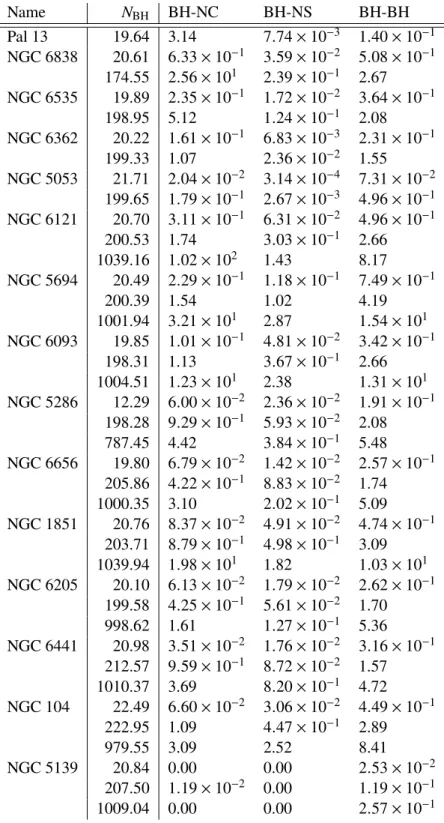
Discussion and conclusions
80] is taken with respect to the time ¯t of an observer approaching one of the black holes;. On the determination of the spin of the black hole in Cyg X-1 from X-ray reflectance spectra”. CONFIRMATION VIA THE CONTINUUM FITTING METHOD THAT THE DIN OF THE BLACK HOLE IN CYGNUS X-1 IS EXTREME”.
Consequently, the amplitudes of the harmonics relative to the fundamental mode will vary across parameter space.
Improved methods for simulating nearly extremal binary black holes 98
Introduction
For now, the region of parameter space with black hole spins close to the theoretical maximum χ= 1 remains almost completely unexplored. In this article, we use the phrase "almost extreme" for χ >0.93, i.e. for a black hole with spin above the Bowen-York limit. Note that a black hole with χ = 0.93 is significantly less extreme than a black hole with χ = 0.998, the upper Novikov–Thorne limit for accretionary black holes [ 39 , 40 ].
We summarize our techniques in Section 3.3, focusing on new improvements to our algorithm that allow us to more robustly simulate higher black hole spins.
Techniques
The magnitude of the cutoff, as encoded in the residual coefficientλ00(t), must satisfy two conditions. Both of the above changes force each Q(t) to be closer to zero as the clipping boundary approaches the horizon. If ∆rmin is at risk, the action again depends on the state of the control system and other variables.
The behavior of the control system depends on various constants σi (1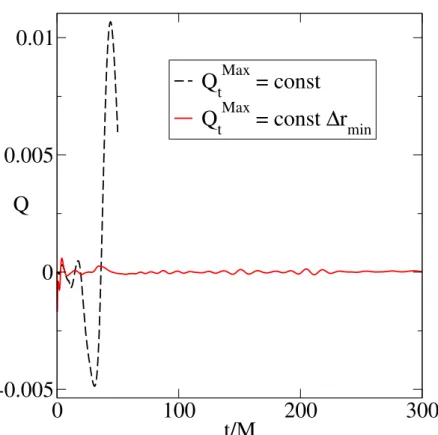
Simulations
Shown are the gravitational wave phase differences between Ψ4 calculated using different values of the numerical resolution parameter N. At early times, the rotation of one of the visible horizons is shown at resolutions N = 2 (black solid), N = 3 (red dot) and N = 4 (blue with blue dots). At late times, the rotation of the merged visible horizon is shown as a function of time for the same resolutions, and an approximation of the late times is shown at the bottom.
However, the uncertainty intervals of the measured and predicted values are different for the same reason as explained in section 3.4.
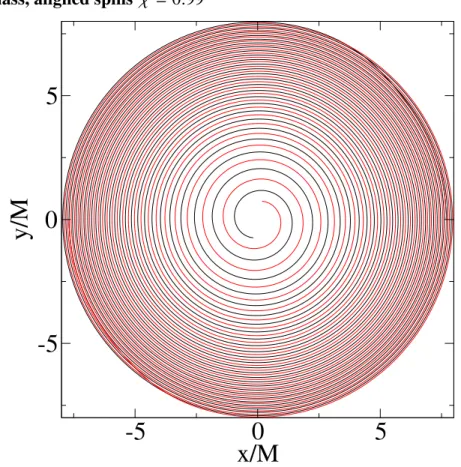
Results
The second assumes that the orbital angular velocity ωorb = dφ/dt of the black hole in the numerical simulation can be equated to that of the perturbative expression. Due to rapid convergence, the difference between the two highest numerical resolutions represents the numerical error at the second highest resolution;. As a conservative estimate of the numerical error of the higher-resolution waveform, we use the difference between the two higher-resolution waveforms as an upper bound.
The upper bound on the numerical phase error of the highest resolution simulation calculated in this way is therefore about 0.2 radians for S++.
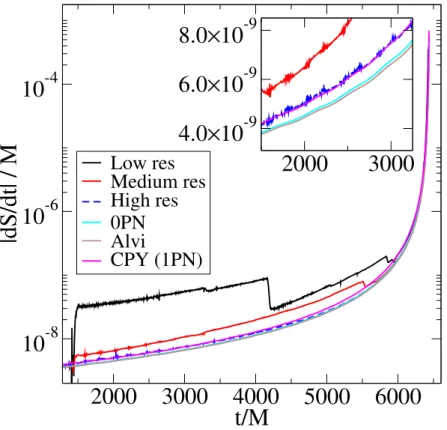
Conclusion
High Accuracy Numerical Simulation of Black Hole Binaries: Computation of Gravitational Wave Energy Flux and Comparisons with Post-Newtonian Approximations. Additionally, an improved ring reduction model through the inclusion of soundings can provide more accurate estimates of residual mass and spin [ 30 , 31 ]. Interestingly, the fundamental mode is in excellent agreement with the expected rate of decay at moments preceding the peak strain amplitude.
We therefore expect the early dominance of overtones to be a generic feature of ringdown.
Black hole ringdown: the importance of overtones
Abstract
It is possible to infer the mass and spin of the remaining black hole from the merger of binary black holes by comparing the ringdown gravitational wave signal with results from research on perturbed Kerr spacetimes. By modeling the ringdown from accurate numerical relativity simulations, we find, consistent with previous findings, that the fundamental mode alone is insufficient to reveal the true underlying mass and spin unless the analysis is started very late in the ringdown. Furthermore, the inclusion of harmonics allows modeling of the ringdown signal for all times beyond the peak voltage amplitude, indicating that the linear quasinormal regime begins much earlier than previously expected.
A ringing-down model that starts at the highest strain amplitude can take advantage of the higher signal-to-noise ratio in the detectors, which reduces uncertainties in the amounts of residue extracted.
Introduction
Recent discoveries of BBH mergers [7–13] by Advanced LIGO [14] and Virgo [15] , including the ringdown phase, have stimulated great interest in measuring QNM from observations [16–22] . This raises the question: at what point in the ringing does perturbation theory become relevant. The inclusion of overtones provides an excellent description of the waveform well before the fundamental mode becomes dominant and extends the regime in which perturbation theory is applicable to times even before the peak amplitude of the waveform distortion.
The inclusion of QNM harmonics provides a high accuracy description of ringdown as early as the time of peak strain amplitude, where the high signal-to-noise ratio (SNR) can be exploited to significantly reduce the uncertainty in the extracted residual properties.
Previous studies
For this waveform, the peak of h occurs first, followed by the peak of the brightness of h, then the peak of Ψ4, and finally the peak of the brightness of Ψ4. As we will show, harmonics beyond n∼2 are expected to have decreased significantly with the peak of Ψ4, so relying on the peak of Ψ4 to begin a ringdown analysis can be problematic. The different start times above can be reconciled to some extent by considering the contribution of overtones to ringdown.
Relying only on the fundamental mode as a description for bleaching should result in agreement only at late times.
Model
Ignoring the contribution of harmonics, by treating them as negligible, as in [19], indirectly leads to the conclusion that residual properties are unconstrained even within the infinite SNR limit – which we believe is not true. Here t0 corresponds to a specifiable 'start time' for the model and times before t0 are not included in the model. We focus throughout on describing the dominant spherical harmonic mode in the NR simulation, the '= m = 2 mode.2 The natural angular basis in perturbation theory is spin-weighted spheroidal harmonics [4–6], which can be written as an expansion in spin -weighted spherical harmonics [6, 46–48].
The amplitudes of the spheroidal and spherical` = m= 2 modes differ by a maximum of only 0.4%, which occurs about 15M after the peak of h.
Results
For reference, the bottom panel also shows an estimate of the error in the NR waveform, |hN R. Since the fundamental mode is subdominant at this time, this single-mode model is a poor probe of the underlying residual mass and spin. 4.1, as well as by the early agreement between the numerically extracted amplitude of the fundamental state and the expected analytical behavior visible in Fig. 4.9.
We find that the estimate of the mass and spin obtained with harmonics at the top is more accurate than that obtained with only the fundamental state at later times.
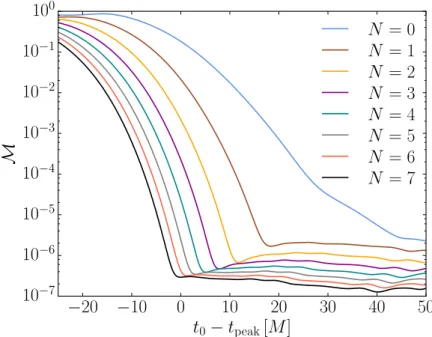
Discussion and conclusions
We suspect that the observed agreement at 3 ms in [16] is due to the lower SNR of GW150914. They can be used to obtain QNM information at the peak of the signal where the SNR is high. This includes tests of the hairless theorem and the law of surfaces, and searches for BH imitators.
Botones can therefore enable a whole new set of precision studies of the ringdown and make black hole spectroscopy realizable with current detectors.
Acknowledgments
Inspiring-fusion-ringdown waveforms of spin preceding black hole binaries in the effective one-body formalism”. Validation of the effective one-body model of spin postulating binary black holes against numerical relativity. Effects of non-quadrupole states in the detection and parameter estimation of black hole binaries with non-prior spins”.
Impact of higher harmonics in the search for gravitational waves from non-spinning binary black holes”.
Testing the no-hair theorem with GW150914
Abstract
Introduction
Method
Results
Discussion and prospects
Acknowledgments
Appendix: Technical Details
